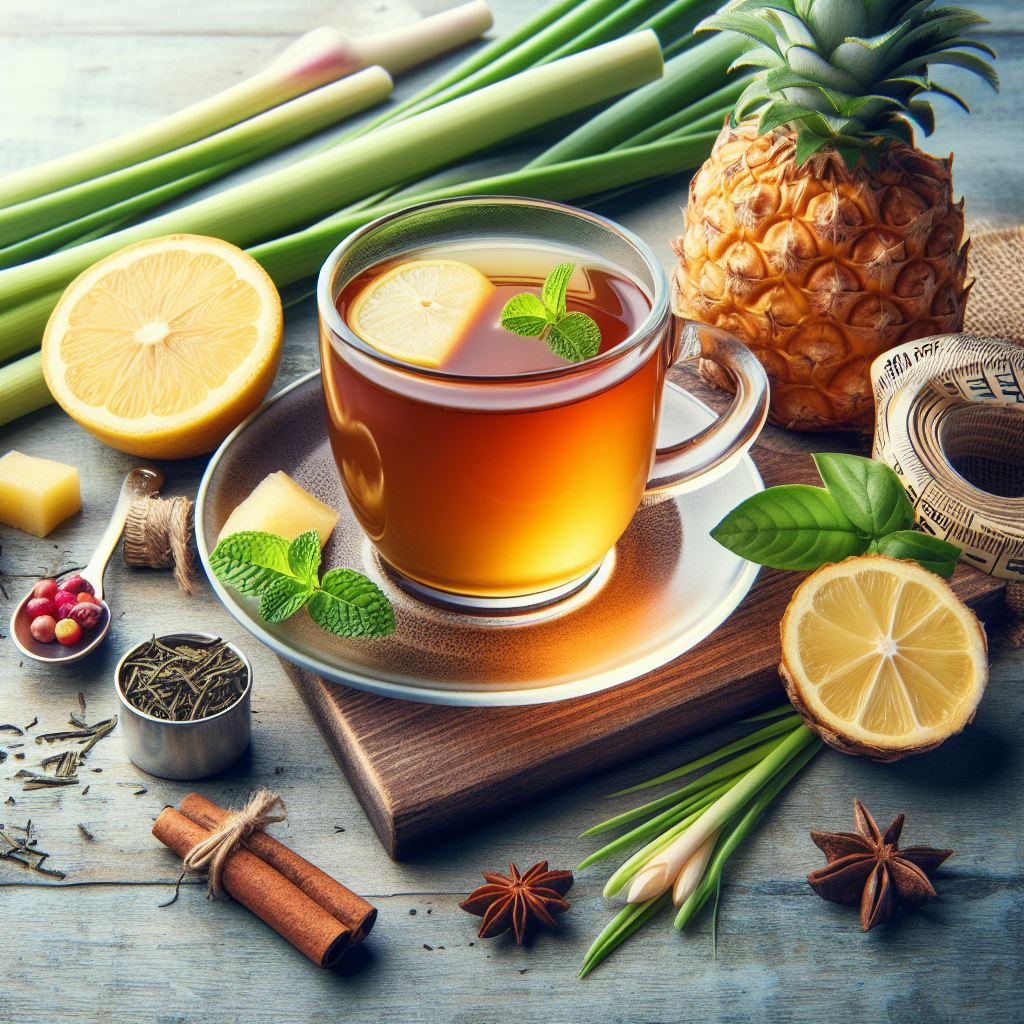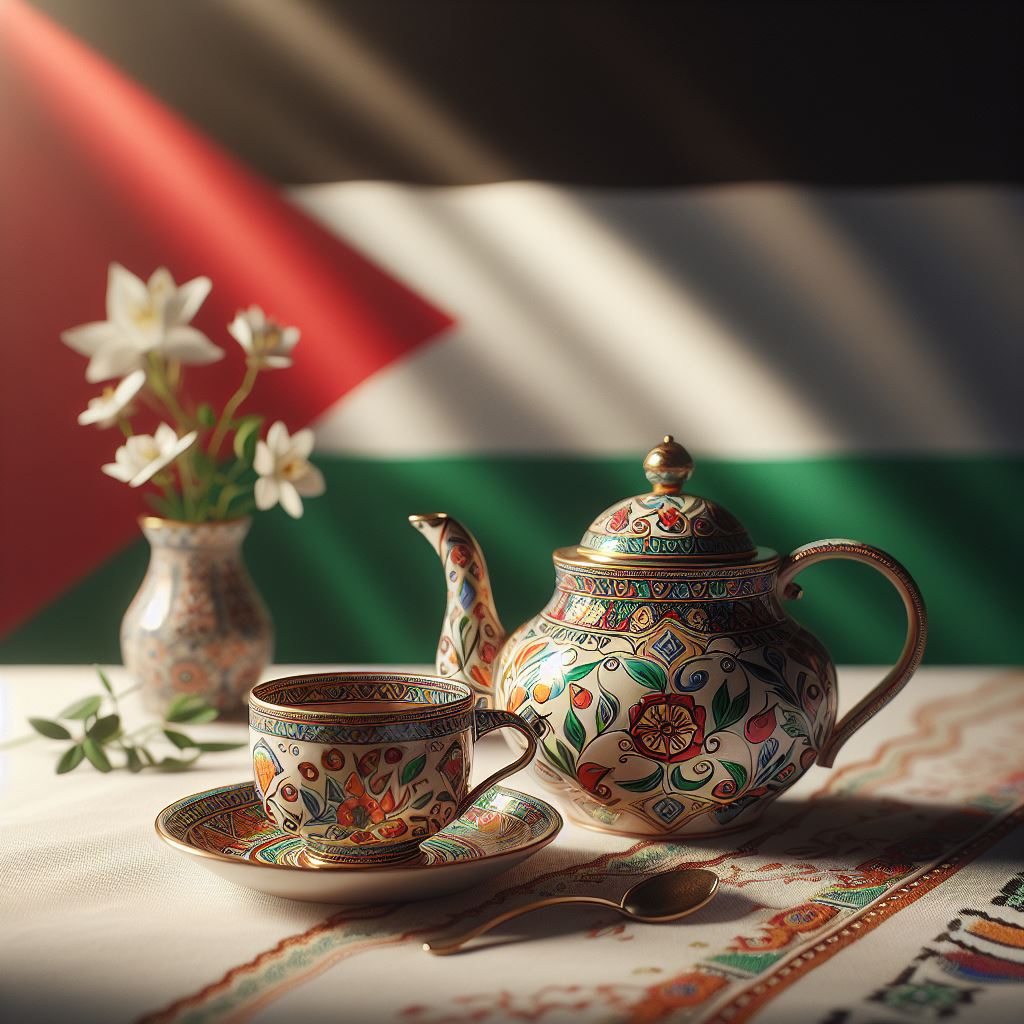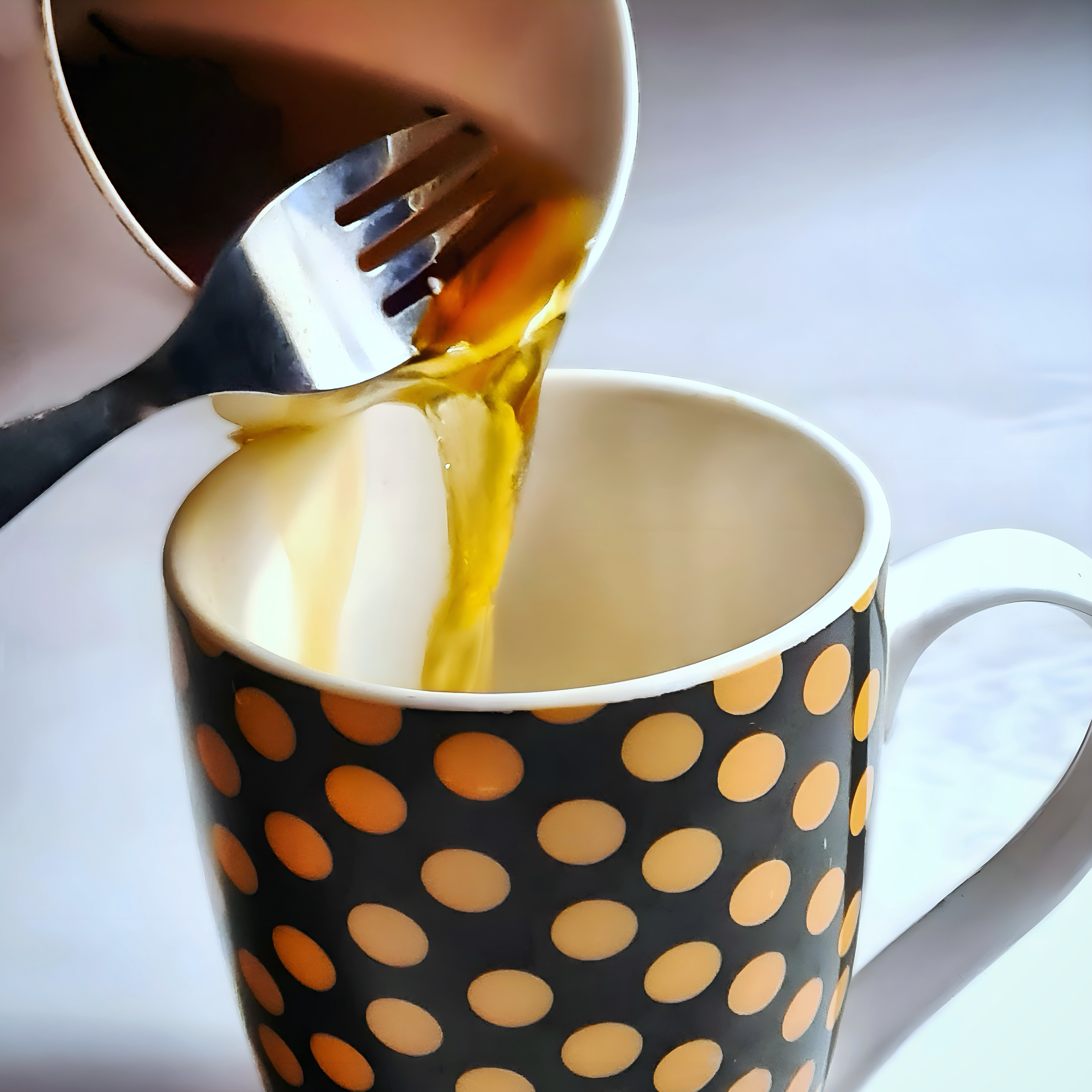Welcome to the first instalment of our blog series “Tea 101”, where we will explore the fascinating world of tea and learn about its history, varieties, benefits, and culture. In this ultimate guide, we will focus on one of the most popular and widely consumed types of tea: black tea.
Black tea is a beverage that has been enjoyed for centuries by people from different regions and backgrounds. It is known for its rich flavor, dark color, and stimulating effects. But what exactly is black tea, and how is it made? What are the different varieties, and how do they differ in taste and quality? What are the health benefits of drinking black tea, and how can you brew it to perfection? And what are some of the traditions and customs associated with black tea around the world?
If you are curious about these questions, then read this comprehensive guide and discover everything you need to know about black tea!

What is Black Tea?
Black tea is a type of tea that is made from the leaves of the Camellia sinensis plant, which is also the source of green, white, oolong, and yellow teas. However, unlike these other types of tea, black tea undergoes a process of oxidation, which changes the chemical composition and appearance of the leaves.
Oxidation is a natural reaction that occurs when the tea leaves are exposed to air and moisture after being plucked from the plant. The enzymes in the leaves break down some of the compounds and produce new ones, such as thearubigins and theaflavins. These compounds give the tea its distinctive reddish-brown color and robust flavor.
The degree of oxidation depends on various factors, such as the temperature, humidity, time, and method of processing. The more oxidized the tea leaves are, the darker and stronger they become. Black tea is usually fully oxidized or close to it, while green tea is not oxidized at all, and oolong tea is partially oxidized.

A Brief History
The origin and history of black tea can be traced back to China, where it was first produced around the 17th century. According to legend, it was accidentally discovered when a batch of green tea was left unattended and became oxidized by the sun. The resulting tea was surprisingly flavorful and aromatic, and soon became popular among Chinese tea drinkers.
Black tea was also one of the first types of tea to be exported to other countries, especially Europe. The British were particularly fond of black tea, and began to cultivate and guide it throughout their colonies in India and Sri Lanka (formerly Ceylon). Today, it is grown in many parts of the world, including Africa, South America, and Turkey.
Popular Varieties of Black Tea
There are hundreds of varieties of black tea, each with its own characteristics and nuances. These are just some popular examples of the many varieties available in the market. You can experiment with different types and find your favorite ones based on your personal preference. Here are some of the most popular ones with some quality recommendations:
Assam
Assam is a type of black tea that comes from the Assam region in India. It is known for its malty flavor, full body, and dark color. It is often used as a base for blended teas, such as English Breakfast and Masala Chai.
- Vahdam Teas: Second Flush Assam Black Tea
A popular and high quality Assam tea with a slightly sweet, balanced, and malty taste. - Ahmad Tea: Kalami Assam
A high quality rich amber loose leaf infusion with a smooth and satisfying malty taste. - Taylors of Harrogate Pure Assam
One of the most popular brands of tea, known for its consistent quality. Tea bags for extra convenience.
Darjeeling
Darjeeling is another type of black tea from India, but from the Darjeeling district in West Bengal. It is often called the “champagne of teas” because of its delicate flavor, floral aroma, and light color. It has four harvest seasons or “flushes”, each producing a different quality and taste.
- Vahdam Teas: Second Flush Darjeeling Loose Leaf
A light, second flush black tea with crisp fruity berry-like nuances. One of the popular brands, well known for it high quality. - Harney & Sons Loose Leaf Darjeeling Tea
A top quality Darjeeling loose leaf blend with a light colour and floral taste.
Ceylon
Ceylon is a type of black tea that comes from Sri Lanka. It has a bright color, a brisk flavor, and a citrusy note. It is also used as a base for blended teas, such as Earl Grey and Irish Breakfast.
- Pantenger Ceylon Loose Leaf Tea
A quality loose leaf blend with an aroma of citrus, prunes, dried fruit and wood. Brewed Pantenger Ceylon tea is full-bodied, brisk and fruity. - Taylors of Harrogate Ceylon Tea
A popular and trustworthy brand with tea bags for convenience. It is a delicate, mellow, and aromatic blend has a rosy color when brewed.
Keemun
Keemun is a type of black tea that comes from the Anhui province in China. It has a smooth flavor, a smoky aroma, and a reddish-brown color. It is one of the most famous Chinese black teas and a key ingredient in English Breakfast.
- Davidson’s Organics: Keemun Congou Loose Leaf
Keemun Congou yields mild smokiness notes with wine-like undertones. The amber-red brew is sure to provide a rich, smooth, and mellow drink. - Harney & Sons Malachi McCormick’s Blend with Assam and Keemun
A high quality blend often used in hotels, offering a mix of malty Assam and smooth, smoky Keemun tea.
Earl Grey
Earl Grey is not a single variety of black tea, but a blend that usually consists of Ceylon or Assam with added bergamot oil. Bergamot oil is an essential oil extracted from the peel of a citrus fruit called bergamot. It gives Earl Grey its distinctive floral and citrusy flavor.
- Twinings Earl Grey
The citrusy essence of Bergamot delivers a unique flavour and aroma to your cup of tea. The pioneer of Earl Grey Tea, the special flavour dates back 10 generations when Richard Twining created an exotic blend for the then Prime Minister, Charles Grey. The flavour of Bergamot gives a unique taste and refreshing flavour. - FGO Organic Earl grey Tea Bags
Oganic Chinese Keemun tea, Organic India Assam tea & Organic Italian Bergamot oil. This tea is blended, filled into tea bags and packed into foil-lined kraft bags in California
Health Benefits of Black Tea
This iconic beverage is not only delicious but also beneficial for your health. Here is a quick guide to some of the potential health benefits associated with black tea consumption:
- Antioxidant properties: Black tea contains polyphenols, which are natural compounds that have antioxidant effects. Antioxidants can help protect your cells from damage caused by free radicals, which are unstable molecules that can contribute to aging and diseases. According to a study published in the Journal of Food Science, black tea has higher antioxidant activity than green tea, oolong tea, and herbal teas
- Cardiovascular benefits: It may also help improve your heart health by lowering your blood pressure, cholesterol, and triglyceride levels. A meta-analysis of 22 studies involving more than 850,000 participants found that drinking three cups of black tea per day was associated with an 11% lower risk of developing cardiovascular disease
- Mental alertness and focus: Black tea contains caffeine, which is a stimulant that can boost your energy, alertness, and focus. Caffeine can also enhance your mood and cognitive performance by increasing the levels of dopamine and norepinephrine in your brain. A study published in the Journal of Psychopharmacology found that drinking black tea improved attention and self-reported alertness in healthy adults
Of course, these health benefits are not guaranteed and may vary depending on the individual and the amount of black tea consumed. It is also important to note that black tea contains tannins, which are compounds that can interfere with the absorption of iron and other minerals. Therefore, it is advisable to drink black tea between meals rather than with meals, especially if you have iron deficiency or anemia.
Brewing Techniques

To enjoy the full flavor and aroma, you need to brew your tea properly. Here is a general guide on how to brew the perfect cup of black tea:
- Water quality: Use fresh and filtered water for brewing. Avoid using tap water or distilled water, as they may contain impurities or minerals that can affect the taste and quality of the tea.
- Water temperature: Use boiling water or water that is close to boiling for brewing. The ideal temperature range is between 90°C and 100°C (194°F and 212°F). If the water is too cold, the tea will not steep properly and will taste weak. If the water is too hot, the tea will become bitter and lose its flavor.
- Steeping time: The steeping time for black tea depends on the type and quality of the tea leaves, as well as your personal preference. Generally, the steeping time ranges from 3 to 5 minutes. If you steep the tea for too long, it will become bitter and astringent. If you steep the tea for too short, it will lack flavor and aroma.
- Tea-to-water ratio: The amount of tea leaves you use for brewing also depends on the type and quality of the tea leaves, as well as your personal preference. As a general guide, the recommended ratio is one heaped teaspoon of black loose leaf tea or one tea bag per cup (8 oz) of water. You can adjust the ratio according to your taste by adding more or less tea leaves.
Extra Tips:
You can also enhance the flavor of black tea by adding milk, sugar, lemon, honey, or spices, depending on the type of tea and your personal preference. For example, you can add milk and sugar to Assam or Ceylon to make a creamy and sweet brew. You can add lemon to Darjeeling or Earl Grey to make a refreshing and tangy brew. Or adding honey to Keemun or Lapsang Souchong can make a smooth and smoky brew. Additionally, you can add spices such as cardamom, cinnamon, ginger, or cloves to any black tea to make a spicy and aromatic brew.
Pairing Black Tea with Food

This type of tea is not only a great beverage on its own but also a wonderful accompaniment to food. Here is an easy-to-remember guide for some food pairings that complement the flavors of black tea:
- Sweet pairings: Black tea goes well with sweet foods such as pastries, cakes, cookies, muffins, scones, chocolate, or fruit. The sweetness of these foods balances the bitterness and astringency of black tea. For example, you can pair Assam or Ceylon with scones and jam for a classic afternoon tea. You can pair Darjeeling or Earl Grey with lemon cake or chocolate cake for a decadent dessert. You can pair Keemun or Lapsang Souchong with apple pie or brownies for a cozy treat.
- Savory pairings: Black tea also goes well with savory foods such as cheese, bread, sandwiches, salads, soups, or spicy dishes. The richness and saltiness of these foods contrast with the bitterness and astringency of black tea. For example, you can pair Assam or Ceylon with cheddar cheese or ham sandwich for a hearty snack. You can pair Darjeeling or Earl Grey with goat cheese or cucumber sandwich for a light snack. You can pair Keemun or Lapsang Souchong with smoked salmon or chicken soup for a savory treat.
Black Tea Culture and Traditions
Black tea is not only a beverage but also a symbol of culture and tradition in many parts of the world. Here are some examples of how black tea is celebrated and enjoyed in different countries or regions:
China 🇨🇳
Black tea is considered one of the six major types of tea in China, along with green, white, oolong, yellow, and dark teas. Black tea is also known as “red tea” in China, because of its reddish color. It is often brewed in a teapot or a gaiwan, which is a small lidded bowl. The tea leaves are steeped multiple times, and each infusion has a different flavor and strength. In China, you will find that it is usually served plain, without any additives, to appreciate its natural taste.
India 🇮🇳
Black tea is the most popular type of tea in India, where it is often consumed with milk and sugar. It is also the main ingredient of masala chai, which is a spiced tea that includes cardamom, ginger, cinnamon, cloves, and other spices. Not only that, but it is used to make iced tea, which is a refreshing drink that can be flavored with lemon, mint, or fruit. This tea is an integral part of Indian culture and hospitality, and is often offered to guests as a gesture of welcome and respect.
Britain 🇬🇧
Black tea is the national drink of Britain, where it is often referred to as simply “tea”. Black tea is usually brewed in a teapot and served with milk and sugar. It is also the centerpiece of the British tradition of afternoon tea, which is a light meal that consists of sandwiches, scones, cakes, and other delicacies. Black tea is also associated with social events and occasions, such as weddings, funerals, or parties.
Turkey 🇹🇷
Black tea is the most consumed beverage in Turkey, where it is known as “çay”. It is brewed in a special double kettle called a “çaydanlık”, which consists of two stacked pots. The bottom pot contains boiling water, while the top pot contains black tea leaves. The water from the bottom pot is poured over the tea leaves in the top pot, creating a strong brew. The brew is then diluted with hot water from the bottom pot according to the preference of the drinker. In Turkey, it is usually served in small tulip-shaped glasses with sugar cubes on the side. Black tea is an essential part of Turkish culture and lifestyle, and is consumed throughout the day and night.
Conclusion
We hope you enjoyed this ultimate guide to black tea and learned something new about this amazing beverage. This popular brew is a versatile and delicious drink that can be enjoyed in many ways and for many reasons. Whether you prefer it plain or with additives, hot or cold, strong or weak, black tea can offer you a satisfying and stimulating experience.
If you are interested in exploring black tea further, we encourage you to try different varieties and find your favorites. You can also experiment with different brewing techniques and food pairings to enhance your enjoyment. And don’t forget to share your tea experiences with us by leaving a comment below or contacting us through our website.
Thank you for reading our blog series “Tea 101”. Stay tuned for our next guide, where we will explore another type of tea: green tea!
Discover More Tea-Related Articles:
- Milk Thistle Tea: The Ultimate Brew for Wellness and Vitality
- Energize Your Tea: Unleashing the Power within Your Cup
- The Amazing Origins of Tea: How Tea Was Invented by a Mythical Chinese God
- How to Make a Tea Schedule for the Day: The Best Teas for Different Times of the Day
- Tea for Sickness: How to Brew the Perfect Cup for Your Symptoms
Sources:





Leave a Comment